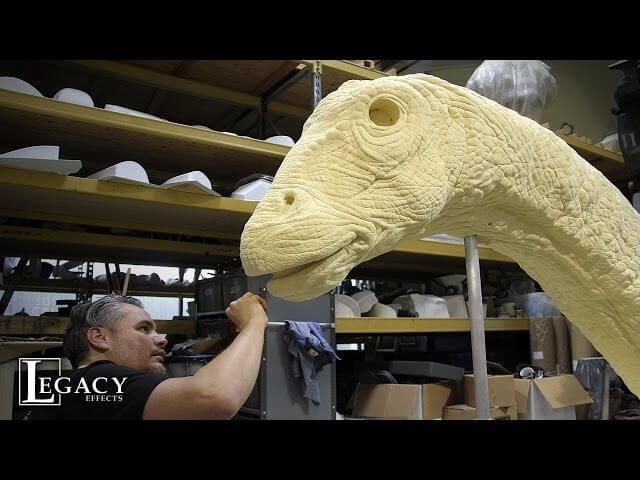The making of Jurassic World’s animatronic Apatosaurus

If you’ve seen any blockbuster sci-fi film from the past six years, you’ve definitely seen the work of Legacy Effects in action. Starting with the 2009 disaster film 2012, Legacy Effects has created some of recent film history’s most iconic speciality suits, creatures, prosthetics, and animatronics, including the various iterations of Iron Man’s suit in Iron Man 2, Iron Man 3, and The Avengers—as well as the Whiplash suit in IM2—the mutation character designs for The Hunger Games, the many colorful suits of X-Men: Days Of Future Past, character design and makeup in World War Z, and the special effects in 2014’s Godzilla.
Most recently, Legacy Effects used its creature-making skills to flesh out Jurassic World. The company posted a video on its YouTube channel detailing the process of making the animatronic Apatosaurus seen dying in the movie. The Apatosaurus goes from its most basic 3-D foam model, to a more detailed version of the head and neck, to a fiberglass and foam mold that gets cooked to perfection, to an animatronic with a complex range of motion, to the eventual dinosaur that seems so real on-screen that you actually feel real feelings for it, all thanks to the combination of art and engineering that brings the Apatosaurus to faux-life. Chris Pratt and Bryce Dallas Howard certainly interact with it as if it’s a living, breathing being. CGI, eat your heart out.